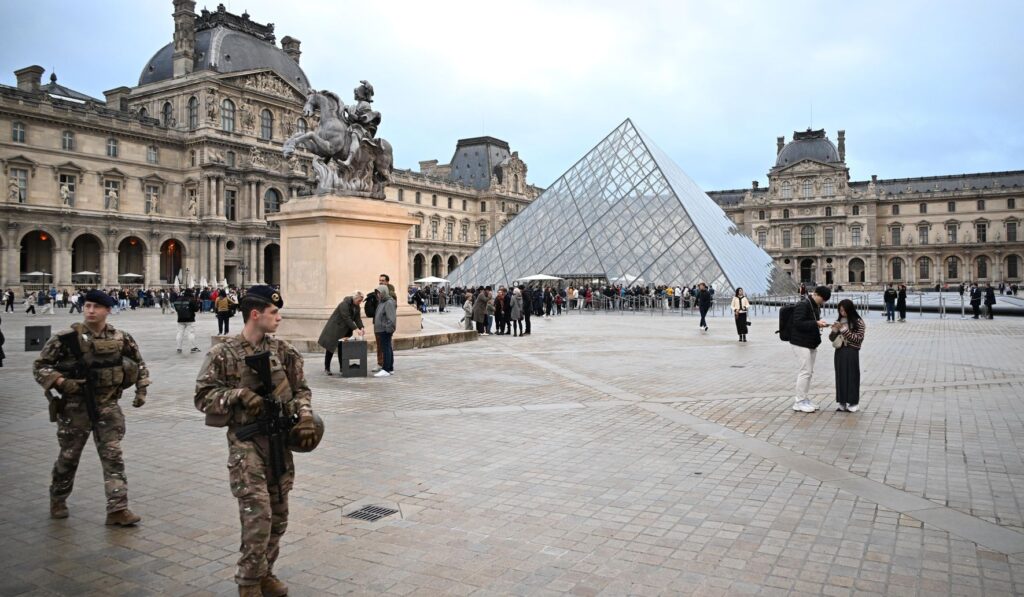French authorities say a man arrested earlier this week is believed to be the fourth member of the group that took France’s crown jewels from the Louvre, the Paris prosecutor said Friday.
The arrest, announced by the Paris prosecutor, centers on a suspected fourth participant linked to the brazen theft of France’s crown jewels from the Louvre. Officials described the detention as a key development in a case that has drawn intense attention across France and beyond. Details remain limited as investigators continue to piece together the group’s movements. The prosecutor’s statement on Friday focused on the identity of the newly arrested man and his alleged role in the event.
The stolen items are iconic national pieces and their loss has prompted immediate action from police and cultural authorities. Museums and collectors track such objects closely, and their disappearance triggers swift investigative channels. Authorities typically use surveillance footage, records of prior contacts, and forensic evidence to build cases in art thefts. In this situation, investigators are likely following those standard lines while avoiding public disclosure of sensitive leads.
The Louvre, as home to some of France’s most treasured artifacts, faces renewed scrutiny over security procedures and risk management. Large museums balance public access with protection, and high-profile thefts force administrators to reassess that balance under public pressure. Security upgrades, revised protocols, and staff interviews commonly follow serious breaches. Insurers and cultural ministries also weigh in when priceless items are involved.
Legal procedures will dictate the next steps now that an arrest has occurred, and the Paris prosecutor’s office is handling the case. Suspects in thefts of national treasures typically face charges that range from aggravated theft to conspiracy, depending on the evidence. Investigators may seek search warrants, execute arrests of associates, and work with international partners if the suspects or objects cross borders. The pace of the judicial process can vary as prosecutors gather corroborating proof.
Recovering the actual objects is a top priority for investigators and the public alike. Crown jewels are distinctive and very hard to move through legitimate channels without raising alarms, which can make recovery more viable than with many other stolen goods. When items are not immediately located, law enforcement often monitors black market channels and private collections. Public appeals and discreet inquiries both play roles in tracking down high-value cultural property.
The arrest raises questions about the planning behind the theft and how a team could execute such a high-profile operation. Observers will look for signs of inside help, technical know-how, or large-scale coordination. Prosecutors tend to build cases incrementally, presenting evidence step by step to support charges in court. For now, authorities have emphasized the importance of continuing the investigation without jeopardizing the integrity of ongoing inquiries.
Public reaction mixes outrage, curiosity, and concern about cultural heritage protection. Such incidents often spur calls for better funding and more modern security for national museums. They also prompt debate about how accessible cultural treasures should be and whether strict access measures deter public engagement. Cultural leaders and lawmakers may use this moment to review policies and propose changes aimed at preventing repeats.
International cooperation can be crucial in art theft cases, especially when objects or suspects move across borders. Interpol and other agencies maintain databases of stolen cultural property and help coordinate searches. Museums and galleries around the world keep an eye on suspicious offers and will alert authorities if the items surface. Cross-border policing and mutual legal assistance treaties are typical tools used in recovery efforts.
At the same time, there are practical steps museums take behind the scenes—digital inventories, improved locks and alarms, and staff training—to reduce vulnerabilities. The balance between public access and robust protection is always evolving, and high-profile thefts accelerate innovation. Curators and security teams increasingly rely on technology and partnerships to safeguard collections without turning gallery spaces into fortresses.
Authorities say the newly arrested man is thought to be the fourth member of the team tied to the Louvre incident, and that statement sets expectations for additional developments as the case unfolds. Prosecutors will aim to connect the dots, gather admissible evidence, and move toward formal charges if supported by their findings. Observers and cultural institutions will be watching legal and investigative developments closely in the days ahead.



